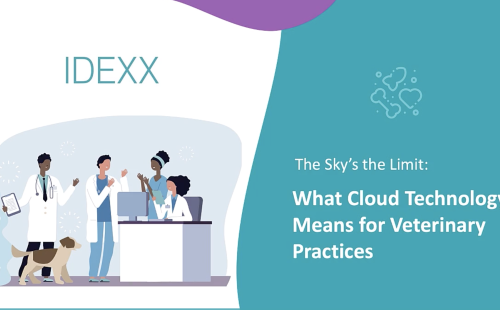7 Digital Veterinary Technology Trends Shaping Practices In 2026

Veterinary technology is advancing rapidly and quickly changing the landscape of daily veterinary practice, including how teams deliver care and connect with pet owners. As the digital transformation progresses across North America and globally, veterinary clinics must keep pace with trends to remain relevant.
Here are six key 2026 digital trends in veterinary technology, and how teams can pass the benefits of technological advances on to their clients and patients.
1. Artificial intelligence
Veterinary practice management software, diagnostic tools, and client-facing chatbots or assistants frequently use artificial intelligence (AI) and machine learning in everyday workflows. AI-powered applications and platforms enable providers to treat patients more efficiently, with accurate diagnoses and faster documentation.
The possibilities of AI in veterinary technology are essentially endless, but for now, AI is most useful when used to analyze diagnostic images and laboratory samples, and help teams scribe medical records based on a recorded conversation. AI record summaries are also a helpful PIMS feature that can reduce the need for endless scrolling, allowing veterinarians more time for face-to-face exam room interactions.
2. Telemedicine and virtual consultations
Veterinary teams now have access to dedicated veterinary technology and telemedicine platforms that help them capture revenue for the time they spend returning calls and answering emails from clients. Telemedicine also allows for virtual consultations and remote care for conditions that don’t require a clinic visit. Additionally, virtual consultations provide better overall access to care, including teletriage in emergency situations, particularly for clients living in remote areas or for clients or pets with mobility and travel restrictions.
Choosing a cloud-based software system with integration capabilities can further simplify telemedicine, allowing teams to conduct remote consultations from within a standard software dashboard and automatically record consultation details in the patient chart.
3. Wearables and health monitoring devices
Activity trackers and smart collars are among the new-age health monitoring devices transforming the way veterinary teams provide animal healthcare. These gadgets track pet health parameters, such as heart rate, sleep, and activity, to help veterinary professionals understand a pet’s nuanced lifestyle and how it can impact overall care. Personalized medicine can help veterinarians develop more precise treatment plans and keep clients engaged in their pet’s health.
4. Cloud-based practice management software
Cloud-based systems are quickly becoming the standard for veterinary technology as clinics move away from the expense and inconvenience of legacy, server-based systems. Working in the cloud often means better data security and enables team members to work from anywhere with internet access, improving their work-life balance and flexibility in scheduling.
Cloud systems can easily connect multi-location hospitals for better continuity of care. They also make it easier to implement software updates and fixes, get IT support, automate tasks, engage clients, and enable add-on services without the burden of costly infrastructure.
5. Financing and payment options
Cost and affordability present barriers to veterinary care for many pet-owning families. In 2026, hospitals using digital platforms that integrate pet insurance, financing programs, in-house payment plans, wellness plans, subscription models, and flexible payment options can gain a competitive edge over those with rigid payment systems and rules.
Payment flexibility makes veterinary care more accessible to clients who want the best for their pets but also need to consider their overall budgets when making care decisions. Eliminating or reducing financial stress on pet owners builds trust, loyalty, and lasting relationships.
6. Advanced monitoring systems
Breakthrough patient monitoring devices enable veterinary teams, particularly in large clinics and referral or emergency settings, to monitor a patient’s vitals when they are outside of immediate view. Advanced veterinary technology tools also include continuous monitoring, such as those designed to track heart rhythms or glucose levels, that can send results directly to veterinarians for faster identification of serious issues.
7. Wellness plans
As client budget stress increases, compliance with preventive care tends to decrease. Veterinary practices that leverage digital wellness plan platforms can make these routine services more affordable for clients, helping pets stay healthy and providing a sustainable revenue stream for the clinic. Choosing a plan provider that integrates with your cloud-based veterinary software system means less hassle for teams and better service for clients.
The future of care
Embracing the digital transformation in veterinary technology can help practices gain a competitive edge in 2026. Jumping on board with 2026 digital trends can help veterinary hospitals and providers improve patient outcomes, increase profitability, and create a sustainable work-life balance for hardworking veterinary teams.



